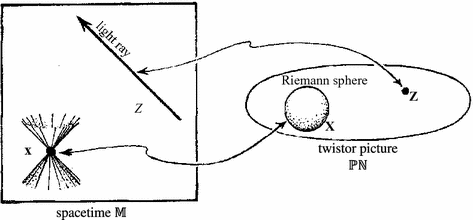I just finished reading The Shape of a Life, which is the great geometer Shing-Tung Yau’s autobiography, co-authored with Steve Nadis. It’s quite fascinating, and an essential read for anyone interested in the history of modern mathematics. Yau has been for a long time a central figure in the field of geometric analysis, so this is in some ways as much an autobiography of the subject as well as of the man.
Back in 2010 I wrote here about an earlier volume by Yau and Nadis, The Shape of Inner Space. What I really liked about that book (and discussed in some detail there) was the autobiographical material about Yau. Much of the book though was devoted to topics like string theory attempts to get physics out of Calabi-Yaus, with a discussion that was detailed and accurate, but to my mind often not of great interest (since these attempts don’t work…).
The new book seems to have been written specifically to appeal to me, greatly expanding the autobiographical material of the earlier book, while limiting the discussion of dubious speculative physics. There is still a fair amount about physics, but this time more focused on another of Yau’s interests, the mathematical theory of general relativity.
The book begins with the story of Yau’s early years in Hong Kong, how he managed to survive an impoverished childhood, avoid becoming a duck farmer, and ultimately find a way to get to the US and graduate study in mathematics at Berkeley. It’s a compelling story of that period and those places. It’s also about the best example I can think of to show how bringing someone with undeveloped talent into the environment of a first-rate research university can change their life, liberating them to accomplish great things, with dramatic impact on their intellectual development as well as that of a whole field.
Yau has always had a deep interest in the history of mathematics, and the story he tells of his intellectual development explains in detail how his own work and ideas grew out of earlier strands of thought. Even as a graduate student, he had started to develop the point of view that has been so fruitful in geometric analysis, using the study of non-linear partial differential equations to prove theorems about geometry and topology. Besides his proof of the Calabi conjecture, this ultimately led to the proof of the Poincare conjecture, a story Yau explains in detail.
Over the years Yau has been involved in various controversies over priority for mathematical results. In this book he doesn’t shy away from discussing these, but generally gives a measured explanation of his point of view on what happened. There’s also a fair number of often amusing stories about mathematicians and the math community that liven up the history. For one sort of example, there are Yau’s descriptions of his culture clash with the long-haired, pot-smoking Berkeley of 1969. For another, here’s a story about Richard Hamilton (of whom Yau has a very high opinion) and his 1982 lectures at the IAS:
Hamilton, who had come from Cornell, stayed for a week in an IAS apartment. At the end of his stay, the chief math secretary was livid because Hamilton had made a huge mess of the apartment, and it took a long time to clean up the place. On the other hand, he had given some wonderful talks, and collaborations between Hamilton, my students, and me picked up from that time forward. So, on balance, his visit would have to be called a great success. Hamilton may have posed some challenges to the cleaning and janitorial staff, but he had posed even more consequential challenges to the mathematics community, some of which were taken up by members of my group.
Yau is generally considered a major figure not just for his research, but also as a politician of the mathematics community, deeply involved for many years in efforts to build or expand research centers, here and in China. A recent example is the creation of the CMSA at Harvard. He has a lot to say about the stories of these efforts, and he definitely does not do so with the style of the politician careful to offend no one. In this book you get Yau’s honest, unvarnished version of what happened, as well as his analysis of some general problems, and I won’t be surprised if some people take offense at this material.
One thing there’s perhaps a bit too much of in the book are the references to his conflicts with his advisor Shiing-Shen Chern (which I’d somehow never heard about before). A major touching theme though throughout the book is that of fathers, sons and traditions of filial piety. There’s a lot about Yau’s father (who Yau very much looked up to) and quite a bit about his sons. On the mathematical side, there’s a lot about his numerous students, many of whom have gone on to important academic careers. As his academic father, Chern also fits into this theme, although not so felicitously. At the end of the book, Yau looks forward to his own future as, like Chern before him, the grand old man of the field. He’s planning more teaching and less research, and taking pleasure in his mathematical legacy and progeny.


